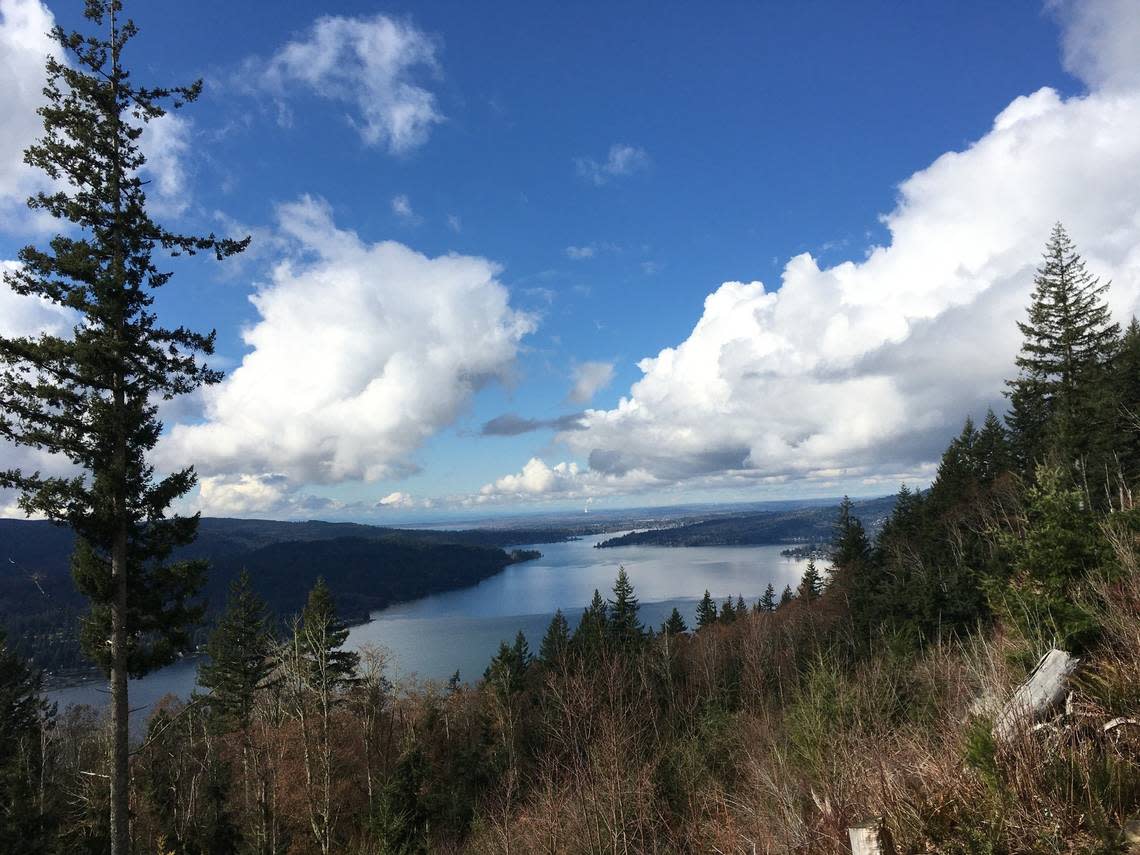Hundreds of acres of Whatcom forestland included in state’s 2,000-acre conservation proposal

Hundreds of acres of structurally complex state forestland in Whatcom County are included in a Department of Public Lands conservation proposal that affects 2,000 acres across five western Washington counties.
The proposal seeks to add the identified land to more than 900,000 acres of conserved forestland the state Department of Natural Resources already manages in western Washington, according to a news release issued Monday, Dec. 18, by the office of Commissioner of Public Lands Hilary Franz.
The parcels are spread across five counties — Clallam, Jefferson, King, Snohomish and Whatcom.
The “structurally complex” designation refers to the complexity and density of a forest’s ecosystem. A 2019 study led by the University of Connecticut indicates such forests are better at retaining carbon. The proposal is part of the state’s Cap-and-Invest Program, established by the Climate Commitment Act of 2021.
“The Department of Natural Resources worked with the counties to identify parcels that are most valuable to protecting fish and wildlife habitat and natural and cultural values,” according to Commissioner Franz’s news release.
Whatcom County
The proposal includes about 575 acres southeast of Lake Whatcom and 75 acres just south of the Middle Fork Nooksack River.
“Protecting the large, contiguous block of structurally complex forest within Lake Whatcom Watershed and adjacent to existing habitat conservation will provide the opportunity to use a number of conservation tools there in the future, including the possible creation of a Natural Resources Conservation Area,” the release states. “These lands primarily support the Common School Trust, which funds K-12 school construction statewide, and local services in Whatcom County.”
The smaller parcel “supports the Common School Trust as well as local services in Whatcom County,” the release states. “That land is contiguous with other areas managed for critical wildlife conservation provided by DNR’s State Lands Habitat Conservation Plan, thus increasing wildlife connectivity and conservation.”
DNR has published maps of the parcels on its website.
The state also announced that DNR will be closing on another 9,000 acres of working forests in Wahkiakum County. That transfer represents the state’s largest property acquisition in more than a decade, according to Franz.
Leadership in the five counties will need to agree on the inclusion of parcels before the and can be transferred. The Board of Natural Resources must approve the final list.
“Our forests are vital for healthy communities and a key tool in the fight against the climate crisis, which is why I am thrilled to have partnered with the counties and Legislature to safeguard over 11,000 acres of forestlands through conservation and sustainable management,” Franz said in the news release. “Conserving these 2,000 acres will protect our most ecologically important forests, enhancing habitat for endangered, threatened and sensitive plants and wildlife, protecting biodiversity and habitat connectivity, and supporting high quality watersheds on our public lands.”
Bellingham-based RE Sources, a regional environmental group, applauded the proposal in an announcement Monday.
“When we protect these stands, we are protecting the old-growth of the future,” said Alexander Harris, Land & Water Policy Manager with RE Sources. “Mature and old-growth forests can help attenuate the floods, landslides, droughts, and wildfires that climate change will bring to our neck of the woods.”
Other parcels, state remarks
Clallam County
A 69-acre tract within the Elwha River watershed west of Port Angeles will be preserved. This tract is formerly part of the Power Plant timber sale, which has been canceled. The site is currently managed to benefit local services in Clallam County.
Jefferson County
The largest tract, approximately 950 acres, will be preserved in two sites in east Jefferson County. The biggest portion included in the proposal is approximately 670 acres around Dabob Bay. The lands are adjacent to the boundary of the Dabob Bay Natural Area managed by DNR, creating enhanced fish and wildlife habitat connectivity. This area is recognized for its intact salt marsh and sand spit plant communities within one of Washington’s highest-functioning coastal spit and tidal wetland systems. It includes mature coastal forests, coastal streams, feeder bluffs, forage fish spawning areas and open marine waters. These lands primarily support statewide school construction and local services.
King County
The proposal will set aside about 290 acres in Tiger Mountain State Forest adjacent to the West Tiger Mountain Natural Resources Conservation Area, thus increasing critical wildlife habitat connectivity for important wildlife species such as cougar, bobcat, elk, and pygmy owl. This area is also important for critical stream systems that support salmon populations. The lands primarily support local King County services and the construction and maintenance of buildings on the Capitol Campus in Olympia.
Snohomish County
The parcel to be set aside in Snohomish County includes almost 70 acres north of Sultan that buffer a rare and sensitive wetland complex along Marsh Creek. This area has previously been identified as a potential natural area. The addition of the 70 acres will protect the wetland complex, helping maintain it in good ecological condition. This area is recognized for its high species composition and ecological structure with few human-induced disturbances. This land primarily supports local services in Snohomish County.
